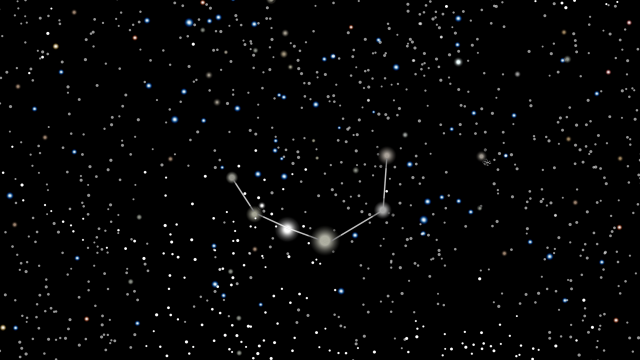There’s a “new” star coming to the sky in the next few months, and it should be visible to the naked eye. Between now and September, the normally so-dim-you-can’t-see-it star T Coronae Borealis will explode into view, making it look as if a new star has suddenly appeared in the Corona Borealis, or Northern Crown, constellation. Scientists predict T Coronae Borealis will be as bright as the North Star, so you shouldn’t need binoculars or a telescope to see it, and it will remain in the sky for as long as a week before fading once again into cosmic obscurity.
What you’ll actually be seeing, should you gaze skyward at the right time, is a nova outburst from T Coronae Borealis, a recurrent nova located about 2,560 light years away from Earth. T Coronae Borealis, (“T-Cor” to his friends) is a binary star system made up of a white dwarf star and a red giant star with a codependent relationship—the white dwarf constantly steals matter from its red giant pal, and about every 80 years, enough matter is gathered to sustain nuclear fusion reactions, resulting in a significant increase in brightness that makes the white dwarf visible from our distant planet.
When can you see the “new” star?
Even though the events that caused/will cause (it’s relative) T-Cor to become visible on earth happened 2,560 years ago, we don’t know the exact moment the shit went down, so the date of T-Cor’s expected appearance can’t be accurately predicted, beyond “probably somewhere between tonight and September.” When it does appear, T-Cor is expected to be visible for up to a week, brightest on the first day and gradually dimming. When not in nova form, T Coronae Borealis is a dismal magnitude 10 star, but it should brighten up to magnitude 2 in only a few hours, making it easily visible to the naked eye.
Where to look in the sky for T Coronae Borealis
If you’re in the northern hemisphere, between latitudes of +90° and -50, look north, and locate the small semi-circle of stars that make up the Northern Crown constellation. (You can save yourself a ton of trouble by using an astronomy app or a star-gazing map, like Night Sky for iOS.) T Coronae Borealis will appear somewhere within the constellation, but its exact position depends on the timing of its appearance. It shouldn’t be a problem to spot once you’re looking at the constellation though—it will be much brighter than the stars that surround it.

Leave a Reply
You must be logged in to post a comment.